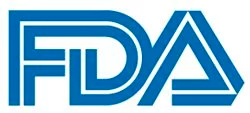Article
Positive FDA Feedback Supports BLA Submission for Lifileucel in Melanoma
Author(s):
The FDA has provided positive feedback regarding Iovance Biotherapeutics, Inc.’s proposed matrix of potency assays for an upcoming biologics license application seeking the approval of lifileucel in the treatment of patients with metastatic melanoma.

The FDA has provided positive feedback regarding Iovance Biotherapeutics, Inc.’s proposed matrix of potency assays for an upcoming biologics license application (BLA) seeking the approval of lifileucel (LN-144) in the treatment of patients with metastatic melanoma.1
Based on this response, the company shared plans to request a pre-BLA meeting in July 2022 to complete the submission of the application by August 2022.
“The favorable feedback received from the FDA on our potency assays and assay matrix brings Iovance a step closer to our submission of a BLA for lifileucel in metastatic melanoma,” Frederick Vogt, PhD, JD, interim president and chief executive officer of Iovance Biotherapeutics, Inc., stated in a press release. “We look forward to bringing lifileucel to the market quickly to offer [patients with] melanoma a new option following anti–PD-1 therapy.”
In the prospective, open-label, multicohort, nonrandomized, multicenter phase 2 IOV-COM-202 trial (NCT03645928), investigators examined the combination of the tumor-infiltrating lymphocyte (TIL), lifileucel, with pembrolizumab (Keytruda) in patients with immune checkpoint inhibitor–naïve advanced melanoma.2
To be eligible for enrollment to cohort 1A of the trial, patients needed to be at least 18 years of age, have received 3 lines or less of prior systemic therapy, have an ECOG performance status of 0 or 1, have at least 1 resectable lesion for the manufacturing of the TIL therapy, and at least 1 measurable lesion following resection for response assessment.
Lifileucel is manufactured at centralized GMP facilities as part of a 22-day process. Before the single infusion of the TIL therapy is administered, non-myeloablative lymphodepletion chemotherapy was given in the form of cyclophosphamide and fludarabine; this was followed by up to 6 doses of interleukin-2. The first dose of pembrolizumab was given following tumor harvest and the agent was continued every 3 or 6 weeks following lifileucel.
The primary end points of the research were objective response rate (ORR) per investigator assessment and RECIST v1.1 criteria and safety in the form of grade 3 or higher treatment-emergent adverse effects (TEAEs).
At a data cutoff of April 29, 2021, a total of 7 patients were enrolled to cohort 1A. The median age in these patients was 52.0 years (range, 34-59), 85.7% were female, 71.4% had an ECOG performance status of 0, and 85.7% had stage IV disease. Approximately 29% (28.6%) of patients received 1 prior line of systemic treatment, which could have included chemotherapy (14.3%), targeted therapy in the form of BRAF/MEK inhibition (14.3%), or other (14.3%).
Regarding BRAF mutational status, 14.3% had mutated V600E or V600K, 42.9% had wild-type disease, 14.3% had unknown status, and 28.6% had other status. Moreover, 57.1% of patients had a PD-L1 tumor proportion score of 5% or higher, 28.6% were PD-L1 negative, and 14.3% of patients had this information missing. Just under half, or 42.9%, of patients had elevated lactate dehydrogenase levels. Patients had high tumor burden with a mean sum of diameters of target lesions was 111.4 mm, and 85.7% of patients had more than 3 target and non-target lesions at baseline.
Data presented during the 2021 ASCO Annual Meeting showed that at a median follow-up of 8.2 months, the combination elicited an ORR of 85.7%, which included a complete response (CR) rate of 42.9% and a partial response (PR) rate of 42.9%. One patient achieved stable disease with the regimen. Moreover, the disease control rate was 100%.
The safety profile of the combination proved to be consistent with the underlying disease and the known profiles of pembrolizumab, non-myeloablative lymphodepletion, and IL-2. Notably, no unexpected toxicities were reported with pembrolizumab following TIL therapy.
Any-grade toxicities experienced with the combination included thrombocytopenia (100%), chills (85.7%), nausea (85.7%), pyrexia (85.7%), vomiting (85.7%), fatigue (71.4%), febrile neutropenia (71.4%), hypertension (57.1%), neutropenia (57.1%), alopecia (42.9%), cough (42.9%), decreased appetite (42.9%), and peripheral edema (42.9%).
The grade 3 or 4 effects reported with the regimen comprised thrombocytopenia (85.7%), pyrexia (28.6%), fatigue (14.3%), febrile neutropenia (71.4%), hypertension (57.1%), neutropenia (57.1%), and peripheral edema (14.3%).
Updated data on 12 patients in cohort 1A showed that the combination produced an ORR of 67%; this included 3 CRs and 5 PRs. Moreover, 6 of the 8 responders were noted to have continued response to treatment at the time of the last data cutoff, with 5 responders experiencing a duration of response of longer than 1 year.
Iovance has shared plans to open a phase 3 study examining frontline lifileucel in combination with pembrolizumab in patients with immune checkpoint inhibitor–naïve metastatic melanoma in late 2022.
References
- Iovance Biotherapeutics announces regulatory and clinical updates for lifileucel in melanoma. News release. Iovance Biotherapeutics, Inc.; April 5, 2022. Accessed April 6, 2022. https://yhoo.it/3v2BYJ4
- Thomas SS, In GK, Doger B, et al. Safety and efficacy of lifileucel (LN-144), an autologous, tumor infiltrating lymphocyte cell therapy in combination with pembrolizumab for immune checkpoint inhibitor naïve patients with advanced melanoma. J Clin Oncol. 2021;39(suppl 15):9537. doi:10.1200/JCO.2021.39.15_suppl.9537









